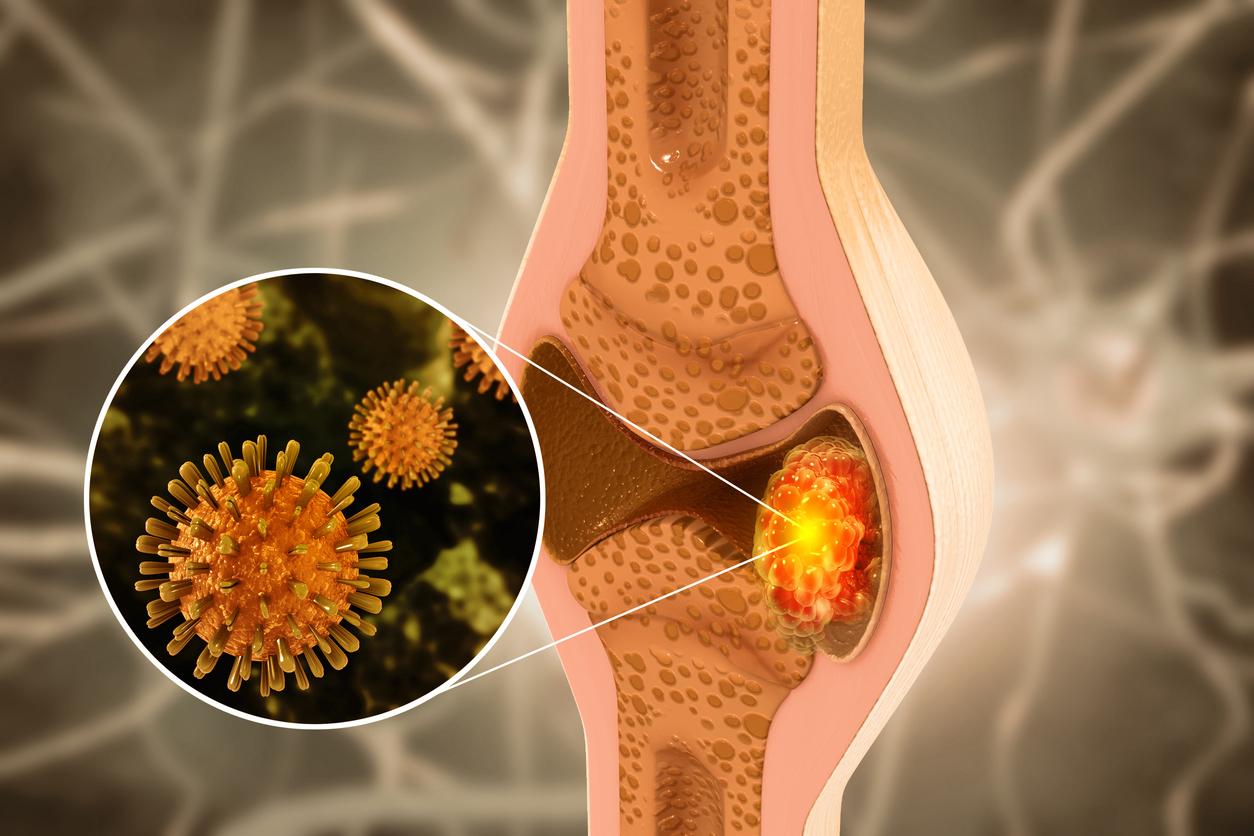The stress fracture (or stress fracture, it’s the same thing) is misnamed: “it corresponds to a crack in the bone: it is not broken as in the case of a real fracture“immediately specifies Dr. Marc Perez, sports doctor and osteopath.
Stress fracture occurs when the bone is subjected to severe and / or repeated stress that is not cushioned by the tendons and muscles. “Very concretely: when we land abruptly on our feet after a jump, when we suffer repeated blows (but not necessarily violent) on the calf, when we make an effort without having warmed up beforehand … we are at risk of developing a stress fracture“explains the doctor.
To know. The bones most frequently affected by a stress fracture are the metatarsals (these are the long bones of the foot, just before the toes), the shins (these are the large bones of the calves) and the calcaneus (the bones of the heels). ). More rarely, the stress fracture can affect the knee or pelvis. “This concerns almost exclusively the lower limbs since they are the ones who are under the most pressure.“adds the specialist.
And also… The stress fracture that affects the bones of the foot is traditionally called a “gait fracture”: historically, it involved new military recruits who walked long distances carrying heavy loads … without being used to it.
Stress fracture, fatigue fracture: who is affected?
The stress fracture / fatigue fracture is a pathology which mainly concerns the athlete: “sports that require running and jumping are more at risk because they cause repeated and / or violent impacts on the bones of the lower limbs“remarked Dr. Perez.
Stress fractures are thus more frequently encountered in tennis, athletics, running, basketball, gymnastics or even handball.
To know. After menopause, women have an increased risk of fatigue fracture because bone fragility can set in (osteopenia, osteoporosis, etc.). The risk is also greater in people with a foot defect – flat feet, hollow feet …
“We can observe a stress fracture in a high level athlete who has “strained” a little too much on his abilities, but also in a beginner athlete who has poorly prepared for a new sporting activity“adds the doctor.
Stress fracture, stress fracture: what are the symptoms?
First thing to know: stress fracture / stress fracture is painful! “The pain is very important, like a fracture, as if the bone were really broken: it is a very localized “point” that hurts when you seek the limb (when walking, when climbing stairs, when driving …) and which can even be painful at rest“explains Dr. Perez.
To the pain may be added swelling (edema): “when the stress fracture concerns the metatarsals, we can for example observe puddled toes“notes the sports doctor. It should be noted that the symptoms do not generally improve spontaneously: in the absence of treatment, the pain can persist for several weeks …
Stress fracture, stress fracture: diagnosis and treatment
Diagnostic. To diagnose a stress fracture or a stress fracture, an x-ray is not enough: “the bone crack usually goes unnoticed“says Dr. Perez. Instead, the attending physician or sports physician orders an MRI scan that can pinpoint the location and severity of the stress fracture:”it is a safe examination for health since there is no radiation“.
Treatments. Treatment for fatigue / stress fracture is primarily about … rest. “Avoid putting pressure on the affected area: the patient must walk with crutches, may possibly use soles to absorb shocks when walking, and must temporarily cease sporting activityThe sports doctor says. The fatigue / stress fracture usually heals within 6 weeks.
To aid recovery, Dr. Perez recommends vitamin D and vitamin K2 supplementation: “these promote the fixation of calcium on the bone and reduce the convalescence time to about 3-4 weeks“.
Stress fracture, stress fracture: how to prevent it?
- Equip yourself well. “Do not start a new sport without the right equipment: at a minimum, for running, you need shoes with good cushioning and good support, recommends Dr. Perez. Ask for advice in the store, your osteopath or your sports doctor.“
- Stay hydrated. “During exercise, remember to drink enough to protect your bones: hydration is not only at the end of the session …“
- Warm up well. “Warm-ups are essential to avoid injuries related to sports activity: they should not be sloppy. The same goes for stretching at the end of the session. If you do not know how to do this, do not hesitate to seek support from a sports coach or a doctor.“
- Before starting a new sporting activity, it is essential to obtain the green light from the doctor: certain sports are indeed contraindicated in the context of certain pathologies (running in the event of osteoporosis, for example).
Thanks to Dr. Marc Perez, sports doctor and osteopath, co-author of Relieve your pain yourself with the osteo-gym (Dr Marc Perez and Alix Lefief-Delcourt, ed. Leduc.S).
Read also :
- Anti-inflammatory essential oils: which one to choose?
- Elastic weight training bands: 6 good reasons to get started
- Weak ankles: 4 movements to strengthen them


















